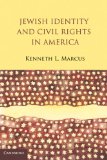On 3 September 2001 the NGO Forum which was convened at the UN World Conference against Racism held in Durban, South Africa, passed a declaration which called for the reinstatement of the 1976 United Nations General Assembly Resolution 3379, namely that “Zionism is racism,”[1] and advocated for the “complete and total isolation of Israel as an apartheid state”. As a consequence of the Durban Conference, virulent anti-Israel activities have overtaken campuses in Europe and North America. Speakers frequently compare Israel to Nazi Germany; anti-Israel ideologues like Ali Abunimah[2] invoke antisemitic rhetoric, offensively stating that “supporting Zionism is not atonement for the Holocaust but its continuation in spirit”; and campus events glorify Hamas and suicide bombings. In many cases, Jews have been specifically targeted, harassed, and even threatened with violence.
While proponents of this extreme rhetoric claim that they are simply criticizing Israeli policies and are not targeting Jews, Ruth Wisse,[3] Irwin Cotler,[4] Anthony Julius,[5] and others have pointed out that claims of “anti-Israelism” are often used to “camouflage” a “new antisemitism”. And indeed, these activities meet the definition of antisemitism as defined by the European Union’s Monitoring Centre on Racism and Xenophobia[6] (recommended for adoption by the UK’s All-Party Parliamentary Groups Against Antisemitism) and the US State Department.[7] As Kenneth Marcus’ Jewish Identity and Civil Rights in America surprisingly reveals, however, the government of the United States and university officials have largely been confused as to how to confront this new form of the “oldest hatred” and whether federal civil rights laws provide Jews with protection.
Civil rights legislation in the U.S. developed after the Civil War with the abolition of slavery and the passage of the Thirteenth[8] and Fourteenth Amendments[9] to the U.S. Constitution. In conjunction, the U.S. Congress passed several civil rights acts beginning in 1866. The original act prohibited discrimination based on “color or race” but there were no penalties for violations and racial discrimination continued to be legally tolerated. Despite some advancements in eliminating state-sanctioned prejudice, it would be nearly one hundred years before Congress enacted the landmark Civil Rights Actof 1964, officially ending the practice of racial segregation, and establishing a comprehensive system to prohibit discrimination based not only on race or color, but also religion, sex, and national origin. The 1964 Act consisted of several “Titles” each addressing a different aspect of society, including voting (Title I), public accommodations such as hotels, theaters, and restaurants (Title II), government facilities (Title III), federally funded activities (Title VI), employment (Title VII), and juries (Title IX). Several administrative bodies were established and charged with enforcing these protections through the promulgation of rules and policies.
It would seem axiomatic that Jews would necessarily fall under the protections of all aspects of the Civil Rights Act. As Marcus explains, however, because of concern for interference in parochial schools or religious universities, “religion” was excluded from the categories of protection specified in Title VI, which only prohibits discrimination on the basis of “race, color, or national origin.” On its face, therefore, the Civil Rights Act did not appear to protect Jews from discrimination in federally funded activities which would include acts of antisemitic harassment on university campuses receiving government assistance. And due to well-intentioned fears of reinforcing antiquated racial theory or even Nazi ideology, the federal agencies responsible for enforcing Title VI did not want to characterize Jews as a “race”. As a result, Jews were largely unprotected when the wave of antisemitic incidents and attacks became endemic after 2000.
Given this background, Marcus thoroughly examines the problem of campus antisemitism and related issues within the rubric of U.S. civil rights law: Are Jews a “race”? Is the new antisemitism a form of “racial discrimination”? Given that “religion” is not a protected class under Title VI of the 1964 Civil Rights Act, how should administrative bodies and courts interpret the apparent lacuna, excluding Jews from protection from discrimination and harassment in federally-funded educational institutions?
To answer these questions, Marcus’ work centers on a 2004 complaint filed by the Zionist Organization of America (ZOA) with the U.S. Department of Education’s Office of Civil Rights (OCR), alleging many lurid and horrifying incidents of antisemitism taking place on the University of California-Irvine campus. At the time that the ZOA complaint was filed, he was the Staff Director at OCR where he was responsible for enforcing Title VI as well as for developing U.S. policy.
Just prior to the filing of the Irvine complaint, Marcus, as OCR Staff Director, issued a new and controversial interpretation of federal policy to remedy the lack of Title VI protection for Jews and other religious-ethnic groups. His book presents a cogent and well-supported legal argument as to how he arrived at this new policy. After reviewing US Supreme Court jurisprudence, including the 1987 cases Saint Francis College v. Al-Khazraji and Shaare Tefila Congregation v. Cobb,[10] Marcus determined that indeed, antisemitic harassment was not simply “religious” discrimination, but could also be considered racial discrimination. As a result of Marcus’ new directive, OCR opened an investigation of the Irvine allegations, but Marcus left his position shortly thereafter to become Staff Director of the U.S. Commission on Civil Rights,[11] and his successor took an ambivalent attitude towards his innovative approach, which essentially annulled his groundbreaking work.
Much of the rest of the book, and one of its more fascinating aspects (perhaps voyeuristically so) involves Marcus’ account of the internal politics at OCR in tackling the Irvine case once he stepped down and how OCR officials wrestled with the shifting policy. The case and the investigation became so hotly charged that OCR’s California regional director eventually sued his superiors in Washington for antisemitic employment discrimination under Title VII of the Civil Rights Act, which unlike Title VI, expressly prohibits discrimination based on religion. The OCR turmoil was also apparent in the resolution of the Irvine case. OCR dismissed the Irvine complaint in November 2007 applying the interpretation of Marcus’ successor that Title VI did not protect against acts of antisemitism. Only a few months later, however, in April 2008, OCR decided to open a new investigation regarding anti-Jewish intimidation and harassment on the campus. The ZOA also appealed the 2007 OCR decision which is currently still pending.
Since the publication of Marcus’ book, OCR has once again reversed course, re-adopting the position spearheaded by Marcus while he was Staff Director: that religious groups like Jews, Muslims and Sikhs may be afforded Title VI protections. On October 26, 2010, OCR issued a letter announcing that “[w]hile Title VI does not cover discrimination based on religion, groups that face discrimination on the basis of actual or perceived shared ancestry or ethnic characteristics may not be denied protection under Title VI on the ground that they also share a common faith.”[12] OCR now appears to be enforcing the new policy. On March 7, 2011, ironically in the midst of “Israel Apartheid Week,” OCR agreed to open an investigation regarding allegations of an antisemitic environment at UC Santa Cruz.[13] In that case, Hebrew Lecturer Tammi Rossman-Benjamin alleged that the UCSC faculty and administration have “promote[d] and encourage[d] anti-Israel, anti-Zionist and anti-Jewish views and behavior, much of which is based on either misleading information or outright falsehoods.”[14]
The initiation of the OCR investigation of UC Santa Cruz is a direct result of the tireless scholarship and advocacy of Kenneth Marcus, as reflected in Jewish Identity and Civil Rights in America, both as the initiator of the 2004 OCR policy which now finally appears to be affording Jews with protection under Title VI, as well as his work at the U.S. Commission of Civil Rights. Marcus can feel proud of the singular role he has played in helping to secure civil rights protections for Jews faced with antisemitic harassment and discrimination on US campuses.
Anne Herzberg, the legal adviser for NGO Monitor, is a graduate of ColumbiaLawSchool and formerly a litigator in New York.
[1] On December 16, 1991, UNGA Resolution 3379, “Zionism is Racism,” was repealed with 111 votes to 25, after Israel said it would not participate in the Madrid peace conference with it still in place. Before Resolution 46/86 was passed, then US President George HW Bush said: “To equate Zionism with the intolerable sin of racism is to twist history and forget the terrible plight of Jews in World War II and, indeed, throughout history.
“To equate Zionism with racism is to reject Israel itself, a member of good standing of the United Nations. This body cannot claim to seek peace and at the same time challenge Israel’s right to exist.”
The phrase was resurrected in 2001 at the World Conference Against Racism in Durban, South Africa, when Arab countries and NGOs again tried to censure Israel and include the language in the draft proposal. As a result, the US and Israeli delegations walked out. Background from JC.COM: http://www.thejc.com/news/on-day/40848/on-day-un-resolution-3379.
[2] Abunimah is the editor of the Electronic Intifada website and frequent speaker on university campus. For more information, see NGO Monitor, “Electronic Intifada and Ali Abunimah Factsheet,” November 29, 2010, available at http://www.ngo-monitor.org/article/electronic_intifada_and_ali_abunimah_factsheet
[3] Ruth Wisse, “The Crooked Finger of Anti-Semitism,” Jewish Ideas Daily, November 2, 2010.
[4] Irwin Cotler, “Beyond Durban,” The Agenda, June 17, 2002, available at http://www.jafi.org.il/agenda/2001/english/wk3-22/6.asp
[5] Anthony Julius, Trials of the Diaspora, Oxford University Press (2010), pp. 441-588.
[6] European Union Monitoring Center, “Working Definition of Antisemitism,” available at http://www.european-forum-on-antisemitism.org/working-definition-of-antisemitism/english/.
[7] US State Department, Office to Monitor and Combat Anti-Semitism, “Defining Anti-Semitism,” June 8, 2010, available at http://www.state.gov/documents/organization/156684.pdf
[8] The Thirteenth Amendment abolished slavery and involuntary servitude.
[9] The Fourteenth Amendment includes an “equal protection clause” which prohibits states from denying “equal protection of the laws”.
[10] As Marcus describes, the Court found that based on the intent of the Civil Rights Act of 1866, “race” could include “ethnic and ancestral groups, including Jews and Arabs, who are not understood today to constitute distinct racial categories”. According to Marcus’ analysis, the Civil Rights Act of 1964 was passed to establish an enforcement mechanism for rights enumerated in 1866.
[11] In his new position, Marcus prioritized examination of the resurgence of antisemitism on US campuses. He convened a panel of experts and the U.S. Commission on Civil Rights issued a report in April 2006, reinforcing the 2004 policy he developed at OCR.
[12] United States Department of Education, Office for Cvil Rights, “Dear Colleague Letter: Harassment and Bullying,” October 26, 2010, available at http://www.zoa.org/media/user/images/DOE-protect-Jewish-students-10-26-10.pdf
[13] Zionist Organization of America, “ZOA Praises Office For Civil Rights – Opening Title VI Investigation Of Anti-Semitic Environment At UC Santa Cruz Arising From Israel-Bashing,” March 14, 2011,
available at http://www.zoa.org/sitedocuments/pressrelease_view.asp?pressreleaseID=2011
[14] Letter to OCR from Tammi Rossman -Benjamin, June 25, 2009, available at http://www.zoa.org/media/user/images/Benjamin-Complaint-6-25-09.pdf






